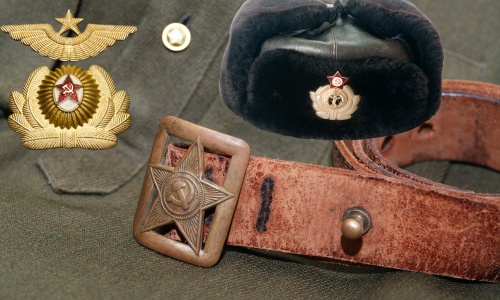
Explore the Rich History of Soviet Military Uniform Accessories from 1917 to 1980
You might think it’s the jackets and boots that steal the show, but Soviet military uniform accessories tell the real story of rank, branch, and era. In this guide, you’ll dive into the badges, belts, and headgear that collectors and museum pros love—and learn how to spot, date, and preserve your pieces with confidence.
Understand Soviet Military Uniform Accessories
Soviet military uniform accessories cover all the extras that complete a soldier’s kit. You’ll find things like:
- Insignia and rank boards
- Collar tabs and branch badges
- Belts, buckles, and straps
- Hats, caps, and liners
- Buttons, cords, and cords
These accoutrements aren’t just decoration; they convey rank, specialty, and even which factory made them. Ready to peek into the details?
Explore common insignia types.
Insignia are the little emblems that tell you who did what and where. Here are the big three:
Collar tabs
- Worn on either side of the collar
- Color and piping indicate branch (infantry, artillery, armored)
- Early-war tabs used stitch-on designs, late-war often metal-backed
Shoulder boards
- Introduced in 1943 to replace tabs
- Star count shows rank (one small star equals junior lieutenant)
- Background color matches the branch, piping shows the specialty
Sleeve badges
- Sewn onto the upper sleeves
- Squad, platoon, or award badges (eg, “Guards” badge)
- Look for factory tags inside the sleeve for dating
If you want to learn more about how the uniform itself evolved, check out our soviet army uniform overview.
Recognize headgear varieties
Ever wondered why you see so many cap styles in photos? Headgear tells plenty about season, role, and time period.
Pilotka side cap
- Foldable cloth cap, worn year-round
- Branch pipings and cockade (star badge) up front
- Wartime versions often lack lining to save materials
Ushanka winter hat
- Fur-lined with fold-down ear flaps
- Soviet Red Star badge on the front
- Post-war models used synthetic fur
Peaked service cap
- Stiff visor and high crown
- Gold or silver cord for officers
- Visor embroidery (“scrambled eggs”) denotes senior rank
Examine belts and buckles
Belts did more than hold up trousers; they were status symbols, too. Spot a fake by checking the details.
| Belt type | Material | Buckle design | Date markers |
|---|---|---|---|
| Officer’s leather belt | Black or brown leather | Cast brass with bore star | Maker code on back |
| Enlisted webbing belt | Canvas webbing | Pressed steel buckle, painted | No maker mark in wartime |
| Parade dress belt | Felt-covered | Polished chrome with wreath | Year stamped underneath |
Key things to check:
- Consistent stitching and wear patterns
- Legible maker codes (factory number plus year)
- Patina—authentic leather darkens with age
Track manufacturing details
A tiny stamp can confirm a piece’s authenticity and era. Soviet factories used numeric codes, rather than names, to identify metal and cloth.
- Factory code (usually one to three digits)
- Year of production (eg, “41” for 1941)
- Quality control marks (small hammer and sickle logos)
During wartime shortages, you’ll see improvised materials or skipped stamps. If a buckle looks untouched or lacks any marks, treat it with healthy skepticism.
Preserve your collection
Cleaning and storage make or break a historic find. You want those stars and stripes shining for decades, not fading away.
Cleaning guidelines
- Use a soft brush to remove loose dirt
- Wipe metal parts with a lightly oiled cloth
- Avoid harsh detergents on cloth or leather
Storage recommendations
- Store in acid-free boxes or tissue paper
- Keep out of direct sunlight and humidity
- Lay flat or hang with padded hangers
Documentation practices
- Photograph every angle, including stamps
- Record factory codes, materials, and any damage
- Note provenance—where and how you found it
Key takeaways
- Soviet military uniform accessories carry rank, branch, and factory info
- Insignia, headgear, and belts each follow distinctive color and marking schemes
- Factory codes and dated stamps help you authenticate and date pieces
- Gentle cleaning, cool storage, and detailed records preserve your finds
Now it’s your turn: what’s the most fabulous accessory you’ve come across? Please share a photo or story in the comments below so we can all admire your find.
Another interesting video about Soviet military uniform accessories

